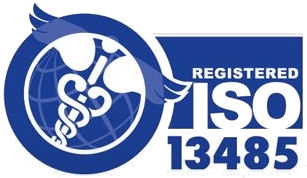ISO 13485:2016



ISO 13485:2016 is a globally recognized standard developed by the International Organization for Standardization (ISO) that specifies the requirements for quality management systems (QMS) in the medical device industry. In order to be certified to the ISO 13485:2016 standard, companies must demonstrate the implementation, maintenance, and effectiveness of a medical device quality management system that identifies, manages, and minimizes risks associated with the manufacturing of medical devices and related services.
ISO 13485:2016 specifies requirements for a quality management system where an organization needs to demonstrate its ability to provide medical devices and related services that consistently meet customer requirements and regulatory requirements applicable to medical devices and related services.
UK Certification reminds us that ISO 13485:2016 Medical Devices, Quality Management Systems Requirements for Regulatory Purposes, became the European harmonised standard and replaced ISO 13485:2003.
Organizations currently manufacturing private label medical devices, but are looking at eventually selling their product in the European Union.
Organizations, such as consulting shops, which design, manufacture and assemble medical and In Vitro diagnostic medical devices and component manufacturers.
Organizations that manufacture In Vitro Diagnostic Medical Devices that want to be prepared for any future regulatory requirements.
Compliance with the standard requires documenting policies for record controls, internal auditing procedures, non-conformance controls, preventative and corrective actions, process and design controls, record retention, accountability and traceability. Risk management must be thoroughly documented and conducted throughout a product’s entire lifecycle, from initial concept to delivery and post-delivery. In the past, risk management was thought to apply only to the design and development phase, but the new standard has made it clear that it is an integral part of enterprise-wide management systems from design to post-sale.